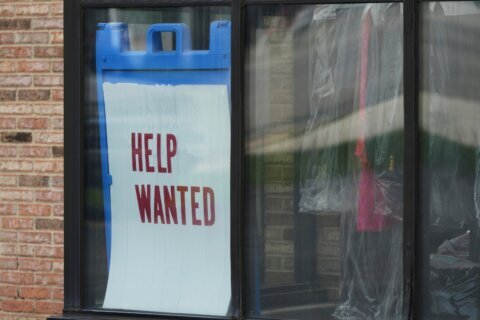
Contracts signed to buy an existing home in April fell 4.4% from the previous month nationwide, but it is not for lack of buyers – it’s a continued and growing lack of inventory.
The market continues to get harder for potential buyers to find something they like or can afford.
In the D.C. metro area, inventory is tighter than it is in many cities.
“Total inventory available for sale is down about 50% from a year ago in the local area, a more severe downturn. Yet there are more fresh listings this year compared to last year or even two years ago before the pandemic,” said Lawrence Yun, chief economist at the National Association of Realtors.
A slew of new homes being listed for sale sounds like it would help elevate the inventory problem, but buyer demand is still outpacing what’s on the market, and a home in the D.C. area now goes under contract in an average of just seven days.
So why aren’t there enough listings to keep up with demand? In the existing home market, it is hesitancy to sell on the part of owners because they would just become buyers then.
“Nearly all home sellers need to buy. And some people just do not want to be involved in this cat and mouse game where they sell and they may be unable to buy. So some potential home sellers are simply waiting and waiting until the market calms down,” Yun said.
The inventory problem is just as pronounced in the newly-built home market because of underproduction by homebuilders.
Yun said builders have been underproducing for 13 straight years. And that underproduction of newly-built homes was exacerbated during the pandemic when there was a rush of buyers who were seeking larger, suburban single-family homes.
For now, new home builders continue to hold back, in part because of dramatically higher materials costs and a tight construction labor market, though most large builders have record or near record backlogs of new homes under contract and waiting to be built.
Yun does see some relief in the inventory crunch by fall as vaccines make some existing owners more comfortable with the selling process, which involves opening their homes to showings and open houses.
Some of the inventory relief will come at the expense of distressed homeowners, with a rise in sellers after the conclusion of the eviction moratorium or as they exist forbearance.









